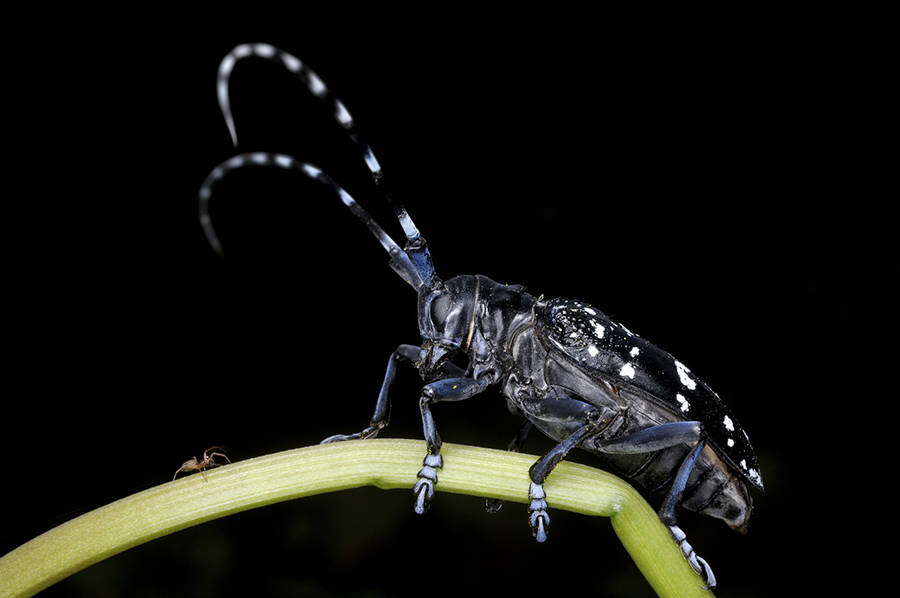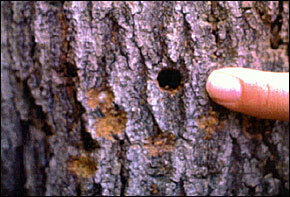
They look like the Darth Vader of insects.
The Asian longhorned beetle is one of the most serious and destructive tree pests to strike North America. So far, this insect has not been found in Fairfax County.
However, it’s in this country — so far, this insect has been found in the New York City metropolitan area, Chicago, two locations in New Jersey, Toronto, Worcester, Mass., and most recently, in Hollywood, S.C.
A native of China, this wood boring insect most likely came to our country through packing crates. Like many exotic invasive insects, it has no natural enemies to keep the population in control. The beetle is slow to spread on its own during the early stages of an infestation, so early detection and reporting is critical to containing it.
A Destructive Insect
Asian longhorned beetles have the potential to destroy millions of acres of hardwood forests as well as residential landscape trees . Trees at most risk include:
- Norway maple
- silver maple
- red maple
- sugar maple
- horsechestnut
- willow
- American elm
- birch
- poplar
- elm
Check Your Trees

Asian longhorned beetles are active in the late summer and early fall, so now is a good time to check the trees in your yard and community for signs of infestation.
According to the United States Department of Agriculture (USDA), signs to look for include:
- Perfectly round exit holes, about the size of a dime or smaller, in tree trunks and branches.
- Shallow oval or round scars in the bark, where the adult beetle has chewed an egg site.
- Sawdust-like material, called frass, on the ground around the tree or in the branches.
- Dead branches or limbs falling from an otherwise healthy-looking tree.
The Asian longhorned beetle has distinctive markings that are easy to recognize:
- Long antennae with black and white bands, longer than the insect’s body.
- A shiny, jet-black body, about 1” to 1 ½” long, with white spots.
- Six legs with possible bluish-colored feet.
What to Do if You Find Infestation
- Make note of what you found, where you saw it and take a photo, if possible.
- Try to capture the insect. Place it in a container and freeze it. Doing so will preserve it for easy identification. (yes, we know, eww!)
- Contact the Fairfax County Forest Pest Branch at 703-324-5304, TTY 711, or via e-mail. Our foresters will provide you with additional information.



 SIGN UP FOR DAILY EMAIL HEADLINES
SIGN UP FOR DAILY EMAIL HEADLINES